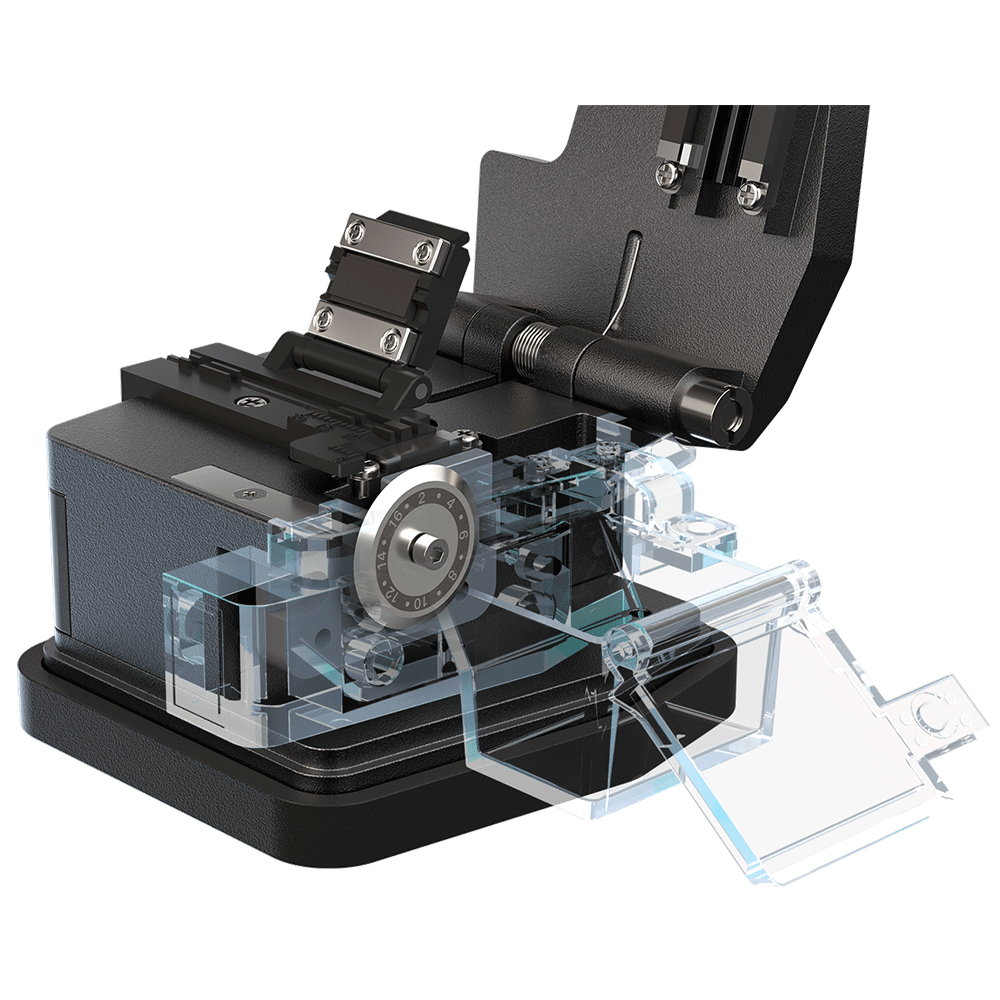When we need to join two optical fibers together, we usually use mechanical splice or fusion splice.
The quality of a cleaver is determined by the following statistical parameters: how smooth the cleave is, how the angle of the cleavage surface is
different from 90°, how often the cleaver breaks fibers, how convenient it is to work with it, what the cleaver’s capacity is, etc.
Both optical fiber slicing techniques require that the fibertips are a smooth end face that is perpendicular (90°) to the fiber axis as shown below.

In the cleaving process, the brittle glass fiber is fractured in a controlled manner.
- The fiber is held with a tensile stress
- The fiber's surface is scratched with a very hard scribing tool, usually a diamond edge
- A sufficiently large surface crack (induced flaw) is made on the fiber surface
- This crack rapidly expands across the fiber cross section at the sound speed
- Two cleaved fiber tips are created
A typical high precision fiber optic cleaver in action is pictured below.
- Cleaved Angel <0.5 degress
- 48000 cut life
- Fall proof, dust proof and water proof
- 3-in-1 holder, 0.25-3.0mm fiber
- Large capacity waste fiber bin
- Knife return back automatically
- Aluminumalloy
- Replaceable blade and fixture
This cleaving process is shown in the video below.
https://www.youtube.com/watch?v=QsN0R61jM5w
Notice:
1.the cleaved ends should not touch anything to avoiding been polluted;
2.Be sure to put the waste fiber after cutting into the waste fiber box
3.After using the fiber cutting cleaver, please keep it clean and put it into the convenient box for a long time keeping.

